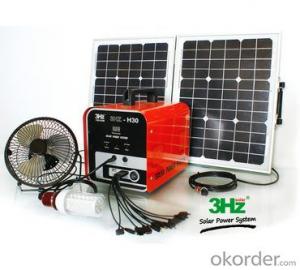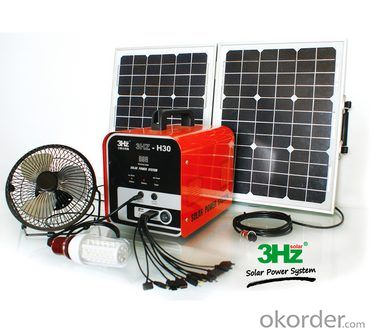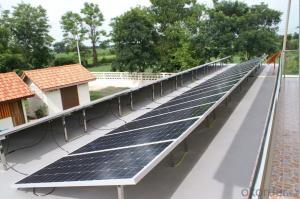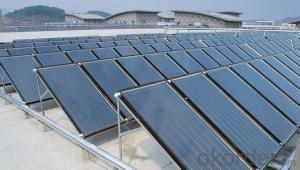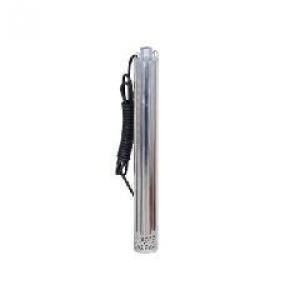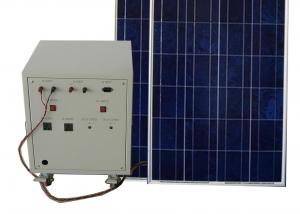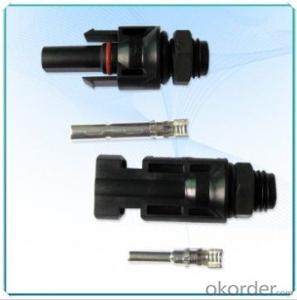Wholesale Solar Power Systems
- Loading Port:
- Guangzhou
- Payment Terms:
- TT OR LC
- Min Order Qty:
- -
- Supply Capability:
- 2000 unit/month
OKorder Service Pledge
OKorder Financial Service
You Might Also Like
Power isn’t always available where and when you need it. Whether you’re hiking in the mountains, camping in the woods, or just plain trying to get away from it all, you need a portable power supply to keep your electronic devices working. Now more than ever, we are dependent on our energy hogging devices to help us live. There’s plenty of free solar power from the sun, so we carry a variety of portable solar power packs to keep you connected. When you need a portable power supply, think of 3HZ-SOLAR!
Our specialty is portable solar power packs, so let us know if you have a special request or question. It’s sometimes hard to know how much power you need for your application. Most of our portable solar power packs require a few extras to charge from the sun, so be sure to check out our complete solar kits. Otherwise, our portable power supply items can be charged from the wall or car. To be truly free, you’ll want to use solar, though.
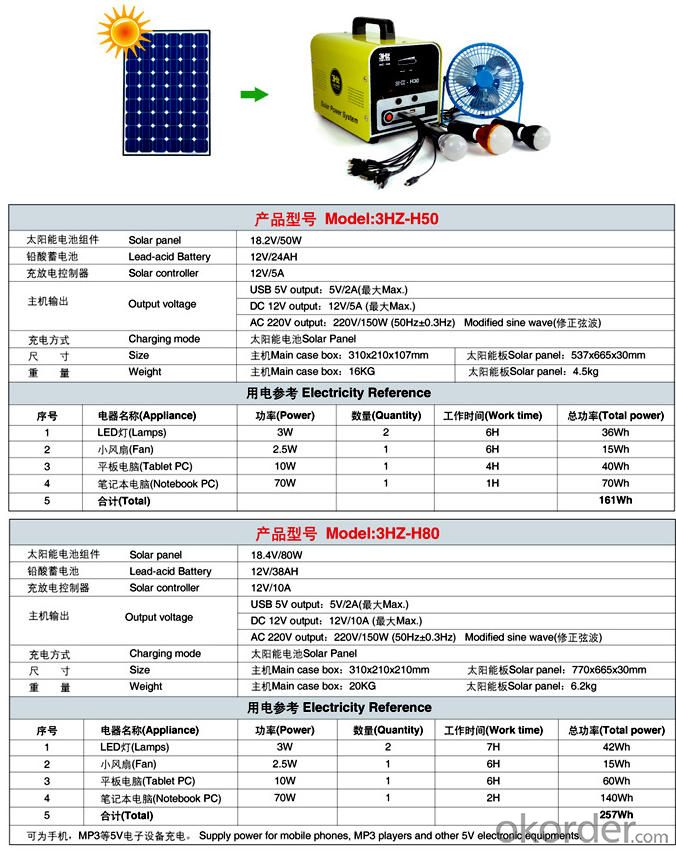
- Q: How can I calculate the size of a solar energy system for my home?
- In order to determine the size of a solar energy system for your home, several factors need to be taken into consideration. The following steps can be followed: 1. Begin by analyzing your past energy bills to understand your average monthly energy usage in kilowatt-hours (kWh). This will provide an indication of the amount of electricity your solar system should generate. 2. Evaluate your location, as the amount of sunlight your home receives is dependent on its geographical position. Consult the solar resource map for your area to estimate the average daily solar radiation. This information will assist in determining the efficiency of the solar panels. 3. Calculate your energy requirements by multiplying your average monthly energy usage in kWh by 12 to obtain your annual energy consumption. Then divide this figure by 365 to determine your daily energy consumption. 4. Determine the output of the solar panels by considering their wattage rating, which indicates the amount of power they can generate under ideal conditions. Divide your daily energy consumption by the average daily solar radiation to estimate the number of solar panels required. For example, if your daily energy consumption is 40 kWh and the average daily solar radiation is 5 kWh/m2, you would need an 8 kW solar system (40 kWh / 5 kWh/m2 = 8 kW). 5. Take into account system losses, which occur due to factors such as shading, dirt, and inefficiencies in the inverter. To compensate for these losses, multiply the estimated system size by a derating factor, which typically ranges from 0.75 to 0.9. This will provide the final system size required. 6. Seek guidance from a solar energy professional or installer, as it is advisable to consult with an expert who can conduct a site assessment and provide accurate calculations based on your specific home and energy needs. They will consider additional factors such as roof orientation, available space, and local regulations to ensure the optimal size of the solar system for your home. Keep in mind that the size of your solar energy system is also influenced by your objectives, budget, and available space. A professional consultation will enable you to make an informed decision and maximize the advantages of solar energy for your home.
- Q: What is a solar inverter and what does it do?
- A solar inverter is an essential component of a solar power system that converts the direct current (DC) electricity produced by solar panels into alternating current (AC) electricity, which is used to power our homes and businesses. It is responsible for optimizing the energy output from solar panels and synchronizing it with the electrical grid.
- Q: Can a solar energy system be installed on a military base or facility?
- Solar energy systems are a viable option for military bases and facilities. Many military bases across the globe have already implemented solar energy systems as a dependable and sustainable power source. The installation of solar panels on military bases not only decreases their reliance on traditional energy sources but also strengthens their energy security and resilience. Integrating solar energy systems into existing infrastructure on military bases, such as rooftops, parking lots, or open fields, is a simple task. These systems can provide electricity for various purposes, including powering buildings, lighting, heating, cooling systems, and charging electric vehicles. Apart from reducing carbon emissions and combating climate change, solar energy systems also lead to long-term cost savings for military bases by reducing energy bills and improving energy efficiency. Furthermore, solar energy systems on military bases offer several strategic advantages. They promote energy independence by reducing dependence on vulnerable foreign energy sources and minimizing the risk of supply disruptions. By generating electricity locally, military bases become less susceptible to blackouts or power outages caused by natural disasters, cyber-attacks, or enemy actions. This increased energy resilience ensures that critical operations can continue even in challenging circumstances. Additionally, solar energy systems align with the military's commitment to environmental sustainability and reducing its carbon footprint. By being a role model and showcasing leadership in renewable energy implementation, military bases can inspire and influence other industries to adopt clean energy technologies, thus contributing to national and global efforts to combat climate change. To summarize, solar energy systems are highly compatible with military bases and facilities. They provide a reliable, sustainable, and cost-effective power source while enhancing energy security and resilience. By embracing solar energy, military bases can achieve their strategic goals, reduce their environmental impact, and inspire others to do the same.
- Q: What is the difference between a solar energy system and a solar thermal system?
- A solar energy system refers to a broader term that encompasses both solar thermal systems and photovoltaic systems. Solar thermal systems specifically focus on converting sunlight into heat energy, which is then used for heating water or space. On the other hand, photovoltaic systems convert sunlight directly into electricity using solar panels.
- Q: How do solar energy systems contribute to job creation?
- Solar energy systems contribute to job creation in several ways. Firstly, the installation and maintenance of solar panels require skilled workers, such as electricians and technicians, creating employment opportunities in these sectors. Additionally, the manufacturing and supply chain of solar equipment employ a significant number of individuals. As the demand for solar energy continues to grow, so does the need for manufacturing, sales, and distribution jobs in the solar industry. Furthermore, the development and operation of large-scale solar farms create new positions in project management, engineering, and construction. Lastly, the shift towards renewable energy sources like solar power leads to a decrease in fossil fuel jobs but simultaneously opens up new prospects in the clean energy sector, fostering job growth and economic development.
- Q: Are there any limitations to installing a solar energy system in a homeowner's association?
- Yes, there can be limitations to installing a solar energy system in a homeowner's association (HOA). While many HOAs have embraced renewable energy and have adopted guidelines to facilitate solar installations, some may have restrictions or limitations in place. One limitation is that the HOA may have specific aesthetic guidelines or architectural standards that must be adhered to. This means that the solar panels may need to be installed in a way that aligns with the overall design and appearance of the community. In some cases, this could mean limitations on the size, location, or visibility of the panels. Another limitation is the potential impact on property values. While solar energy systems are generally seen as a desirable feature, there could be concerns among some homeowners about the impact on property values. In some cases, the HOA may require an approval process, including a review by a committee or board, before allowing installation. Additionally, there may be limitations related to the structural integrity of the property. Solar panels can be heavy, and certain roofs or structures may not be able to accommodate the added weight. The HOA may require a structural assessment or engineering report to ensure that the installation will not compromise the integrity of the building. Lastly, there may be limitations related to legal and regulatory requirements. Depending on the jurisdiction, there may be specific permits, licenses, or agreements required for solar installations. The HOA may need to ensure that all necessary documentation and approvals are obtained, which can add time and complexity to the installation process. Overall, while many HOAs are supportive of solar energy systems, it is important for homeowners to review their specific HOA guidelines and engage in open communication with the association to understand any limitations or requirements that may be in place.
- Q: What permits or approvals are required for installing a solar energy system?
- The permits and approvals required for installing a solar energy system may vary depending on the location and regulations of the specific jurisdiction. Generally, some common permits and approvals that might be required include building permits, electrical permits, zoning permits, and interconnection agreements with the local utility company. It is recommended to consult with local authorities or hire a professional installer who can guide you through the specific requirements in your area.
- Q: Can solar energy systems be used for powering electric vehicle solar charging roads?
- Yes, solar energy systems can be used for powering electric vehicle solar charging roads. Solar panels can be installed alongside or on top of the charging roads to harness energy from the sun and convert it into electricity. This electricity can then be used to power the charging infrastructure for electric vehicles, allowing them to charge their batteries while driving. Additionally, excess energy generated by the solar panels can be stored in batteries or fed back into the grid, ensuring a continuous and sustainable power supply for the charging infrastructure. This combination of solar energy and electric vehicle charging roads can help reduce the dependence on fossil fuels and promote the use of renewable energy in the transportation sector.
- Q: Can solar energy systems be used for powering telecommunications infrastructure?
- Yes, solar energy systems can be used to power telecommunications infrastructure. Solar panels can be installed on rooftops or in open spaces to harness sunlight and convert it into electricity. This renewable energy can then be used to power communication towers, equipment, and other telecommunications infrastructure, providing a sustainable and reliable energy source. Additionally, solar energy systems can be combined with battery storage solutions to ensure uninterrupted power supply even during periods of low sunlight or at night.
- Q: What is a solar thermal system?
- A solar thermal system is a type of technology that utilizes the sun's energy to heat water or air for various applications, such as space heating, water heating, or even electricity generation. It typically consists of solar collectors, which absorb sunlight and convert it into heat, and a system to store and distribute this thermal energy for use when needed.
Send your message to us
Wholesale Solar Power Systems
- Loading Port:
- Guangzhou
- Payment Terms:
- TT OR LC
- Min Order Qty:
- -
- Supply Capability:
- 2000 unit/month
OKorder Service Pledge
OKorder Financial Service
Similar products
Hot products
Hot Searches
Related keywords
